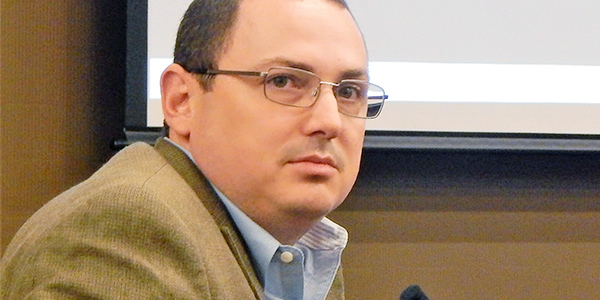By Tom Kleckner
FERC on Tuesday approved changes to the MISO–SPP joint operating agreement intended to improve an interregional planning process that has yet to produce joint projects.
The commission found the proposed Tariff revisions, effective Wednesday, to be just and reasonable and in compliance with Order 1000, which reformed FERC’s transmission planning and cost allocation requirements for transmission service providers (ER19-1895, ER19-1896).
The RTOs filed the revisions after Coordinated System Plan (CSP) studies came up empty in 2014 and 2016. After gathering feedback and other input from stakeholders, they proposed three primary improvements to the CSP process:
- Eliminating the use of a joint model in favor of individual RTO regional analyses;
- Adding avoided costs and adjusted production cost benefits to project evaluation; and
- Removing the $5 million cost threshold to be eligible as an interregional transmission project.
The RTOs said the improvements would allow them to continue performing joint and coordinated planning annually, but also “to more efficiently evaluate regional and interregional transmission projects concurrently, potentially test more projects than the existing process, and evaluate potential interregional transmission projects under ‘multiple regional futures’ which may allow for a better business case than projects studied under a joint model with a ‘single future.’”
Stakeholders, particularly those on SPP’s side of the seam, had complained about the study process’ “triple hurdle,” which required the $5 million threshold, a 345-kV project or larger, and RTO benefits representing 5% or greater of the total benefits in the combined region. (See MISO, SPP to Ease Interregional Project Criteria.)
“It takes a herculean effort in what amounts to a simple screen” before going to the regional review, MISO’s Eric Thoms, then manager of interregional planning and coordination, said during a 2018 meeting of the RTOs’ Interregional Planning Stakeholder Advisory Committee.
“The changes resulted from extensive stakeholder discussions about the barriers to reviewing interregional transmission projects,” SPP’s David Kelley, director of seams and market design, said in a statement. “We believe the changes will lead to a more efficient, collaborative planning process as we continue to evaluate opportunities for addressing transmission needs along the extensive SPP-MISO seam. We’re putting this new process into place immediately and will continue to evaluate its effectiveness over the next couple of planning cycles.”
MISO spokesperson Julie Munsell agreed with Kelley, saying the changes “will allow both RTOs to better identify and build cost-effective, mutually beneficial interregional projects.”
The RTOs are already well into a 2019 CSP study, although they have yet to identify a joint project. (See “Revised Seams Study with MISO yet to Bear Fruit,” SPP Seams Steering Committee Briefs: July 10, 2019.)
The American Wind Energy Association, Clean Grid Alliance and Advanced Power Alliance protested the RTOs’ filing, asking FERC to reject the elimination of the joint model, the most contentious issue among stakeholders. They argued that “negative consequences will outweigh any positive benefits” and that without the joint model, there would be no mechanisms for the RTOs “to work together or agree to study assumptions.”
MISO and SPP would wind up with “a transmission planning mechanism that is not robust and a cost allocation in which stakeholders will lack confidence,” the parties said.
FERC found that a joint model is not required to ensure interregional transmission coordination. It said that the JOA and CSP processes “support coordination between the two RTOs, including the proposed joint review of each region’s models.”
“We find that the [CSP] process adequately ensures that MISO and SPP are coordinating and sharing the information necessary to make transmission planning decisions and identify potential beneficial transmission projects,” the commission said. “Since each RTO uses its respective regional model to calculate project benefits using the benefit metrics outlined in the JOA, stakeholders in each region should have the same level of confidence in the cost allocation method for an interregional transmission project as they would have for a regional transmission project.”





